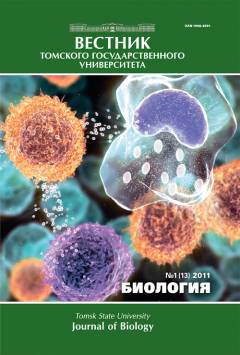Lichens as bioindicators of atmospheric pollution in Kemerovo
Methods of the lichenoindication show to what extent environmental factors are favorable for urban ecosystems and for people living in the area. Such researches have not yet been carried out in Kemerovo. Material for the study is specimens of lichens collected in native ecosistems and urban planting in summer 2008-2009. For the purpose of bioindication there were used only lichens on bark, whose number is 137 species of 175 (78.3% lichen flora of Kemerovo). The territory of the city was subdivided into squares with a side of 1 km. In each square there was measured the occurrence and the projective covering of lichens and the rate of trees, free of lichens. Lichens on the bark are grouped into 10 poleotolerance classes. Basing on the data for each square, the poleotoleranсе index (IP) was calculated. IP numbers were applied to lichenoindication schematic map of Kemerovo. With an increasing anthropogenic pressure species diversity, projective cover of lichens and it's synusia are declining. The analysis of the rate of trees, free of lichens in different communities, shows that the urban planting lichen occurrence decreases even more with the increasing ofanthropogenic pressure and species diversity and projective cover of lichens are declining. Among lichens on wood plants bark in Kemerovo there are 56 species (40.8% of total), the most sensitive to air pollution and related to the first three poleotolerance classes. Of these, 30% (17 species) were noted sporadically. The rate of the lichens which are relatively resistant to human disturbance, included in the 7-10poleotolerance classes is 38.7% of total lichens on the bark (53 species), of which 12 species (8.8% of total lichens on the bark) were found in all city districts, even in extreme growth conditions. On the basis of the data on the lichen occurrence and abundance in different districts of the city there was calculated the poleotolerance index and lichenoindication schematic map of Kemerovo was drawn. Within the urban area there were identified 5 zones differing in the degree of pollution. A significant and strong pollution characterized most of the territory of Kemerovo - 66.3% (about 200 km), including most residential areas, parks, public gardens along roads and areas occupied by low-rise buildings), the territories of industrial enterprises and their surroundings. According to lichenoindication data, the most polluted are the Zavodsky district and the least polluted is the residential area Lesnaya Polyana.
Keywords
лишайники, лихеноиндикация, полеотолерантность, атмосферное загрязнение, lichens, lichenoindikation, poleotolerance, atmospheric pollutionAuthors
| Name | Organization | |
| Romanova Ekaterina V. | Central Siberian Botanical Garden of Siberian Branch of the Russian Academy of Sciences (Novosibirsk) | korr@ngs.ru |
References

Lichens as bioindicators of atmospheric pollution in Kemerovo | Vestnik Tomskogo gosudarstvennogo universiteta. Biologiya - Tomsk State University Journal of Biology. 2012. № 4 (20).